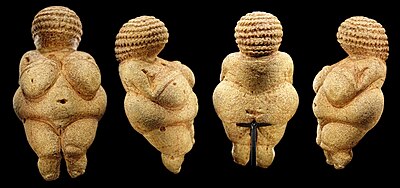When Thelema arrived in 1904, it was recognized by adherents to the faith that the world or at least the consciousness of the West had changed fundamentally. This was referred to as a new Aeon, called the Aeon of Horus. Quickly attempts were made to classify the previous periods of time or Aeons, where other mindsets had predominated. Each Aeon consists of a period where a certain mindset and type of deity had a dominance over others. There is not often a clean break between different periods as different cultures changed their thinking at different times.
The period of pre-history is often referred to as the “Aeon of Isis” by people who adhere to the religious teaching of Thelema. This period is characterized by men standing in awe of nature or “the goddess”. This is when man has no means to protect himself from nature and is subject to her whims. Isis symbolizes nature here.
This period in mankinds development is characterized as hunter-gather societies. It is during this time that cave paintings began to appear and some of the earliest stone age models are made. For example the statue below which in absence of its real name, is called “the Venus of Willendorf”.

This statue is suggested by some to be the first form of a goddess, but naturally we have no idea what it is or any clue as to its function. Carbon dating and soil analysis indicates this dates back as far as 28,000 BCE so actually find out is impossible.
Dating from the same time, there are many cave paintings which indicate more than anything a need to capture aspects of their lives including the hunt. Prevalent in this culture is a certain respect for nature. It features in nearly all surviving art from this period. I mean, what was there in these people’s lives that wasn’t nature in some form or another?
If a person was to equate Nature with the Goddess then you could claim they lived in a continued state of fear and reverence for the Goddess and man had no means to protect himself from her wrath.
There is very little evidence for or against the practice of Magic during this Aeon.
Between 4000BCE and 2000BCE, hunter-gatherer societies began to settle into agricultural societies, writing began to appear and the Aeon of Orisis began.
